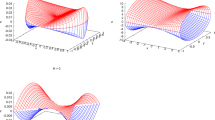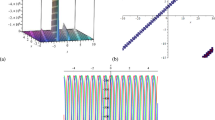Abstract
In this paper, a combination analytical-numerical integration method for solving the differential equations of a modified set of Lagrange's planetary equations is described. The integration method is an Encke-type method because it involves integrating the deviations between the actual trajectory and a reference trajectory. The reference trajectory is obtained from an analytical solution containing the dominant secular and periodic effects of the gravitational field of the primary body. A set of nonsingular elements is used so that the method will be valid for all circular and elliptical motions. It is shown that the method is an accurate and efficient means of satellite ephemeris generation.
Similar content being viewed by others
References
Kyner, W. T. and Bennett, M. M.: 1966, ‘Modified Encke Special Perturbation Method,’Astron. J. 71, 579–582.
Stumpff, K. and Weiss, E. H.: 1968, ‘Applications of anN-Body Reference Orbit,’J. Astron. Sci. 15, 257–261.
Born, G. H. and Tapley, B. D.: 1968, ‘An Approximate Solution for the Short-Term Motion of a Lunar Satellite,’J. Spacecr. Rockets 6, 513–519.
Kaula, W. M.: 1966,Theory of Satellite Geodesy, Blaisdell Publishing Co, Waltham, Mass.
Author information
Authors and Affiliations
Rights and permissions
About this article
Cite this article
Born, G.H. An Encke-type special perturbation method. Celestial Mechanics 2, 103–113 (1970). https://doi.org/10.1007/BF01230454
Received:
Issue Date:
DOI: https://doi.org/10.1007/BF01230454




